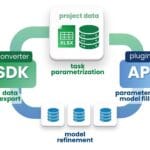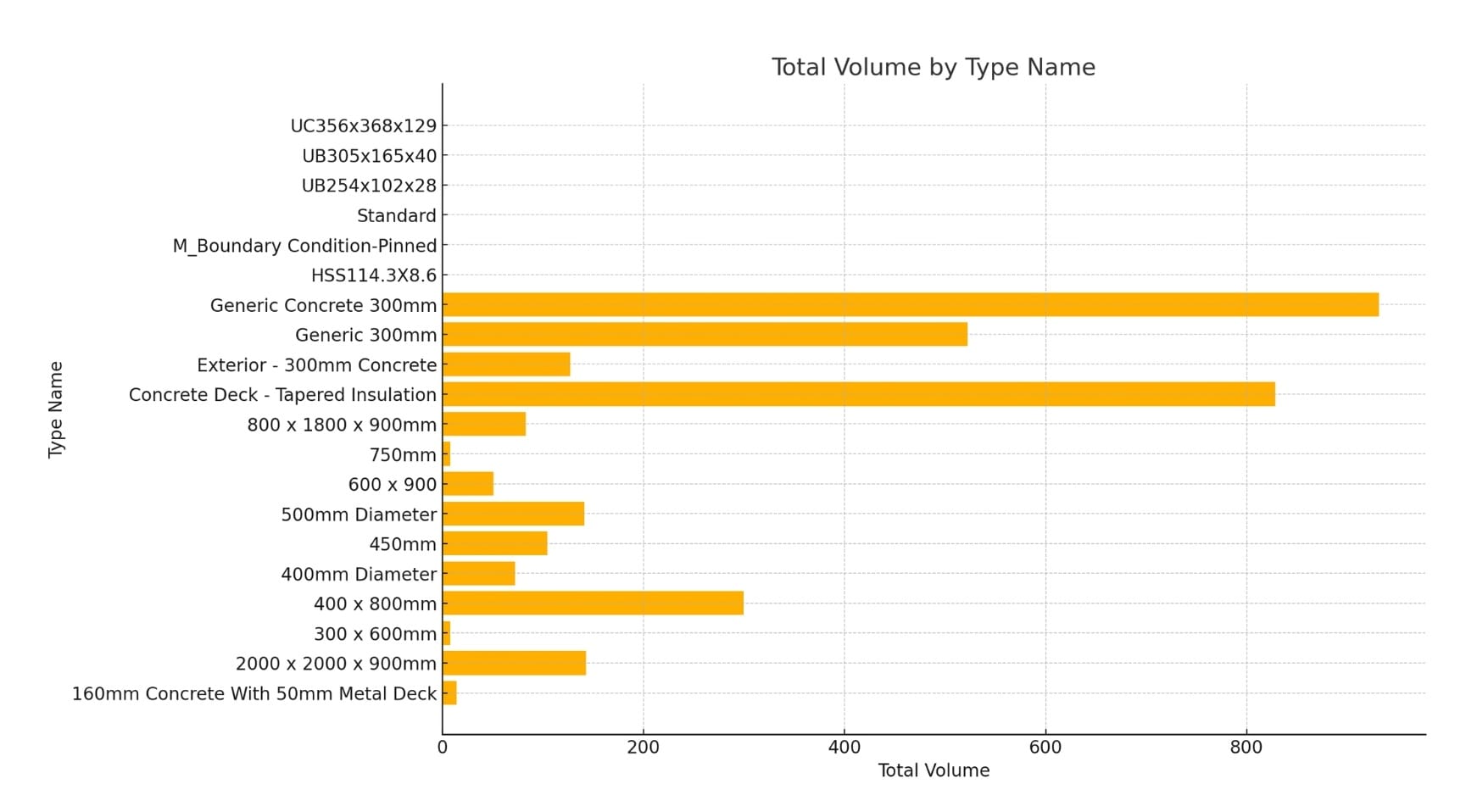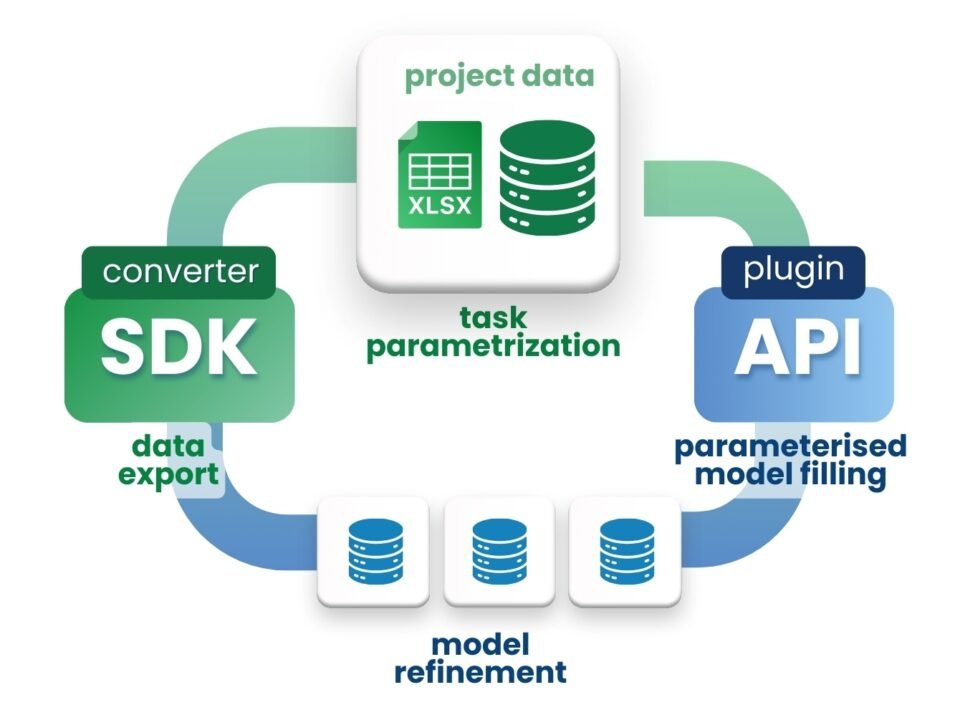In addition to the development of CAD database access tools and open and simplified CAD -formats, the emergence of LLM -tools (Large Language Models) is revolutionizing the processing of design data. Whereas previously the access to information was mainly through complex interfaces and required programming and knowledge of API, now it is possible to interact with data using natural language.
Engineers, managers and planners with no technical background can obtain the necessary information from project data by formulating queries in ordinary language. Provided the data is structured and accessible (Fig. 4.1-13), it is enough to ask a question in LLM chat like: “Show in a table with grouping by type all walls with a volume of more than 10 cubic meters” – and the model will automatically convert this query into SQL or code in Pandas, generating a summary table, graph or even a ready document.
Below are some real-life examples of how LLM -models interact with design data represented in various CAD- (BIM-) formats.
- Example of a query in LLM chat to a CAD project in RVT format after conversion (Fig. 4.1-13) to a tabular dataframe (CHATGP, LlaMa, Mistral DeepSeek, Grok, Claude, QWEN or any other):
Group the data in Dataframe obtained from RVT file by “Type name” when summarizing “Volume” parameter and show the number of elements in the group. And please show all this as a horizontal histogram without zero values.
- To generate a QTO table of wall types with total area and quantity from the category “Walls” let’s formulate a text query for LLM -chat:
Take only those items from the project dataframe that have “OST_Walls” in the “Category” parameter, group them by “Type Name”, sum the value of the “Area” column, add the quantity, and display them in the table by removing null values.
- LLM response in the form of a finished QTO table:

Fig. 6.4-6 Creating a QTO table in natural language provides the same quality results as when using CAD – (BIM-) tools. - Let’s query the project in IFC format after converting to a tabular dataframe and enter a similar text query into any LLM chat:
Take only those items from the project that have Level 1 and Level 2 values in the “Parent” parameter, and take the items that have IfcSlab values in the “Category” parameter, then group these items by the “ObjectType” parameter, sum the values in the “PSet_RVT_Dimensions_Area” parameter, and show them as a pie chart.
Behind each of the resulting ready-made solutions (Fig. 6.4-5 – Fig. 6.4-7) is a dozen lines of Python code using the Pandas library. The resulting code can be copied from the LLM chat room and used in any local or online IDE to get identical results outside the LLM chat room.
In the same LLM chat we can work not only with projects obtained from 3D CAD (BIM) formats, but also with flat drawings in DWG format, to which after conversion to a structured form we can query the LLM chat in order to display, for example, data on element groups in the form of lines or 3D geometries.
























